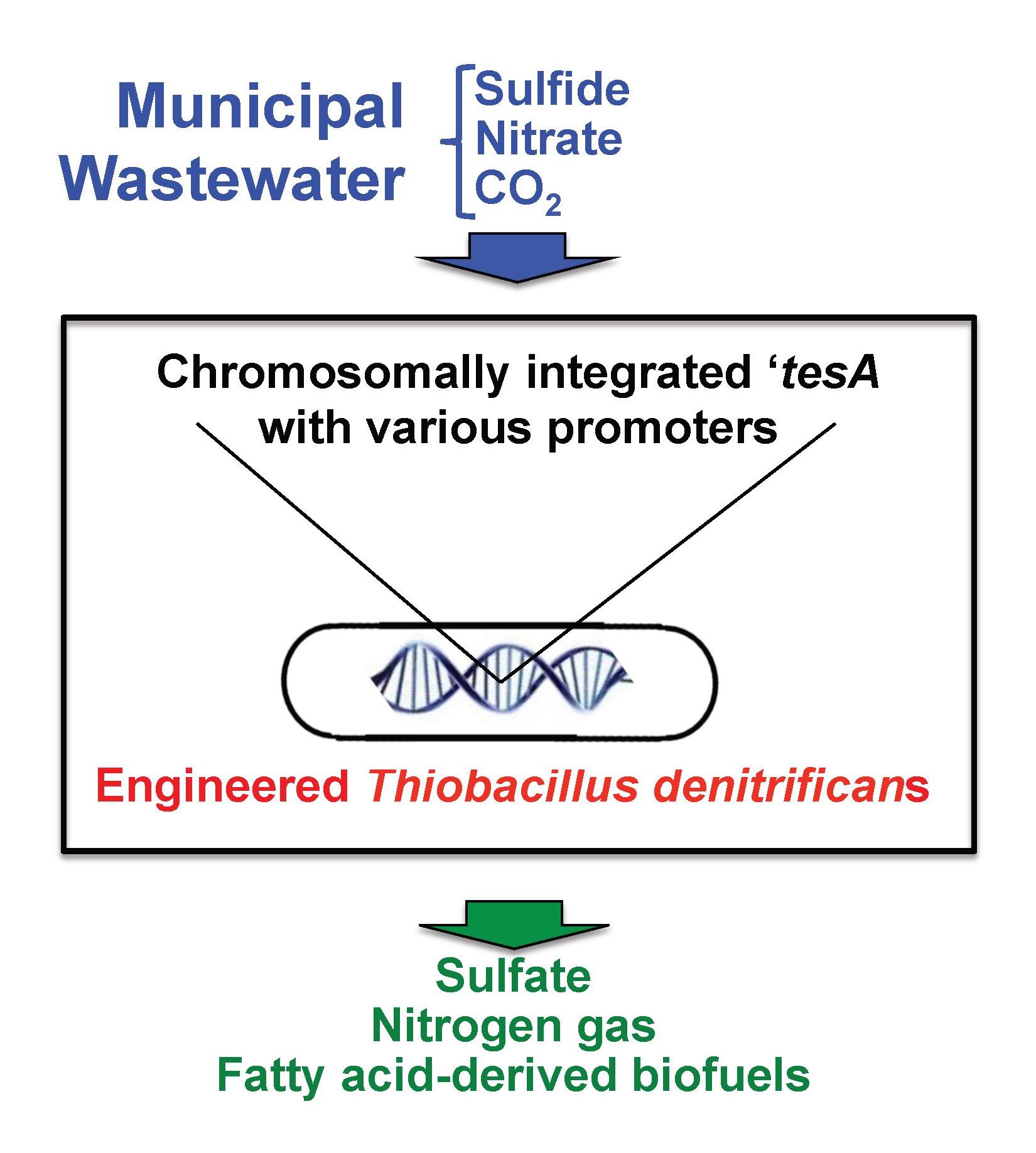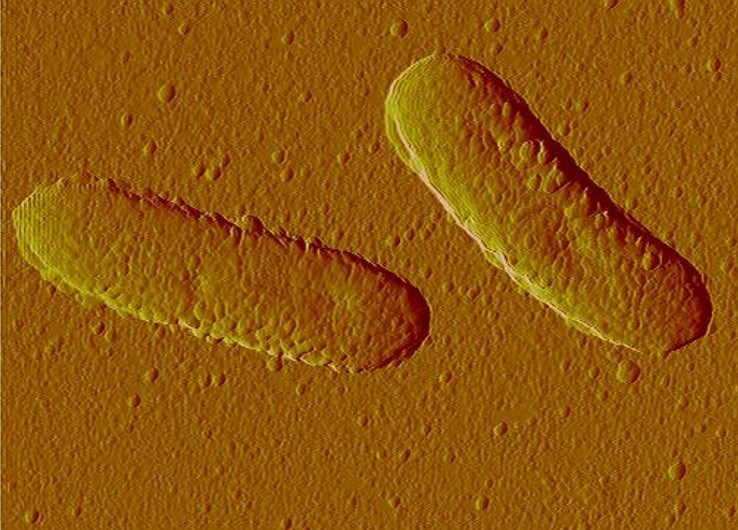-By Irina Silva
Berkeley Lab scientists at JBEI have demonstrated a promising biological approach to convert nuisance chemicals in municipal wastewater (sewage) treatment plants into renewable fuels or chemicals. Hydrogen sulfide (which is responsible for the odor of rotten eggs) is a malodorous and corrosive chemical that is problematic in municipal wastewater treatment plants and is typically removed by relatively expensive chemical treatment. JBEI scientists have engineered a common soil bacterium, Thiobacillus denitrificans, which naturally consumes hydrogen sulfide and nitrate (another problem chemical), and fixes CO2 (a greenhouse gas), to simultaneously overproduce fatty acids; these can be further converted to biofuels or value-added chemicals.
 In recently published research, Harry Beller (Senior Scientist at Berkeley Lab) and LBNL colleagues (Peng Zhou, Talia Jewell, Ee-Been Goh, and Jay Keasling) showed that engineered Thiobacillus denitrificans strains could produce more than 50 times the amount of fatty acids compared to the unmodified (wild-type) strain when growing on reduced sulfur compounds, CO2, and nitrate. This is the first demonstration of engineering autotrophic (CO2-fixing) bacteria to make renewable fuels/chemicals using reduced sulfur compounds as a source of energy. In other studies, Beller’s group has engineered different bacteria to produce diesel fuel replacements and valuable fragrance chemicals (medium-chain methyl ketones) from fatty acids, and in the future, this capability could be added to the engineered Thiobacillus denitrificans strains. This proof-of-principle study suggests that engineering sulfide-oxidizing bacteria to overproduce fatty acid-derived products merits consideration as a technology that could simultaneously produce renewable (CO2-based) fuels/chemicals as well as cost-effectively remediate sulfide-contaminated wastewater.
In recently published research, Harry Beller (Senior Scientist at Berkeley Lab) and LBNL colleagues (Peng Zhou, Talia Jewell, Ee-Been Goh, and Jay Keasling) showed that engineered Thiobacillus denitrificans strains could produce more than 50 times the amount of fatty acids compared to the unmodified (wild-type) strain when growing on reduced sulfur compounds, CO2, and nitrate. This is the first demonstration of engineering autotrophic (CO2-fixing) bacteria to make renewable fuels/chemicals using reduced sulfur compounds as a source of energy. In other studies, Beller’s group has engineered different bacteria to produce diesel fuel replacements and valuable fragrance chemicals (medium-chain methyl ketones) from fatty acids, and in the future, this capability could be added to the engineered Thiobacillus denitrificans strains. This proof-of-principle study suggests that engineering sulfide-oxidizing bacteria to overproduce fatty acid-derived products merits consideration as a technology that could simultaneously produce renewable (CO2-based) fuels/chemicals as well as cost-effectively remediate sulfide-contaminated wastewater.
Top image: Thiobacillus denitrificans, credit: Joseph Tringe
